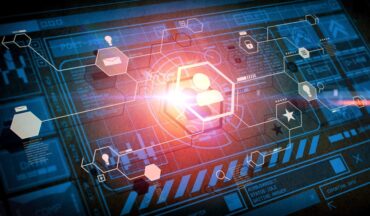
The days of manual processes, cumbersome software, and siloed sourcing events are gone – it’s time for new tools (like GenAI) that do more with less.
Terms like Artificial Intelligence (AI), Machine Learning, and Data Democratization are no longer just high-tech buzzwords hinting at the promise of innovation. These tools and strategies are now being used to transform businesses in a variety of ways by breaking down silos and enabling teams to move faster while adhering to established guidelines.
That is particularly true for procurement teams and organizations that heavily rely on key sourcing activities.
The Current State of Sourcing
Often, sourcing events like Requests for Proposals (RFPs), Requests for Information (RFIs), and Requests for Quote (RFQs) are handled by sourcing professionals or procurement specialists. The procurement process can be quite complex. Having these events handled by a dedicated person or team ensures all requirements are met and guardrails or company standards are upheld to mitigate risk. Beyond compliance standards, sourcing professionals are also tasked with finding appropriate suppliers, collaborating between teams or organizations, analyzing and evaluating possible outcomes, and documenting the whole process in an often antiquated or cumbersome software. All of this is to ultimately arrive at a decision that satisfies regulatory requirements, cost structures, supplier capabilities, and project timelines.
The siloed process of handling sourcing events leads to constrained resources, meaning competitive sourcing events only happen for the most strategic spend. When the demand for procurement outweighs the resources provided to the procurement team, the organization will feel the effects of this unbalance in more ways than one.
Two major pitfalls of a constrained procurement team are, simply put – time and money. Increased demand for sourcing events means an increase in all the backend work that goes into those events, such as contract compliance and due diligence. This creates long wait times for sourcing events, which can lead to teams not engaging with procurement for sourcing needs. Once one person figures out a “hack” to get their sourcing needs met, others will follow. This can quickly result in the breakdown of the established processes, leading to confusion regarding when, if at all, the procurement team needs to be involved. Time constraints of an under-resourced procurement team also impact the bottom line. Strategic purchases may not make it to market, and new innovations or strategies might get tabled in favor of clearing the event backlog. When procurement teams are only reactive rather than proactive, they are leaving money on the table.
See also: Calculated Risk: Procurement as the New Front Lines of Business Security
Meeting Evolving Needs
In tandem with technology, organizations’ needs are also evolving. Gone are the days of unmanaged tail spend—every facet of the sourcing process is a candidate for optimization. Globally, supply chains continue to face volatile and disruptive shifts as the economy recovers post-pandemic. Rising costs of raw materials, energy, transportation, and labor are impacting the efficiency and profitability of supply chains, meaning procurement teams are under increased pressure. With inflated costs, scrutiny of company spend goes beyond just high-risk or high-value sourcing events – stakeholders want actionable insight into where the money is going and how they are going to meet project deadlines.
With this shift, visibility and collaboration are paramount to the success of not only procurement teams but the entire organization. Business units cannot wait for lead times or costs to come down – speed and decision clarity are needed to ensure projects are delivered on time. In addition to cost concerns, there is increased pressure on sustainable and ethical sourcing practices. Large organizations, particularly publicly traded companies, are required by the SEC to disclose potential Environmental, Social, and Governance (ESG) risks or reports to investors. So, procurement teams need to find appropriate supplies that meet ethical and governance standards, identify cost savings, and deliver projects on time. Sounds easy, right?
See also: Holistic Transformation: The Key to Long-term Value Creation and Procurement Success
Adapting to Change
Enter GenAI. Generative Artificial Intelligence (GenAI) is a self-service tool that responds to natural language inputs to generate relevant responses based on the context of prompts input by the user. On the back end, it can be trained using data for its intended purpose, while on the front end, it functions like a chatbot for a seamless user experience. This is a game changer for under-resourced procurement teams and the business units they support.
The first step in any sourcing event is establishing the requirements for obtaining goods or services needed for business operations. This collaboration can be done via phone call, email, Excel spreadsheet, etc., but the primary function is to ask the right questions to get the required answers. Historically, procurement professionals have been the knowledge keepers of those “right questions” to ask. This is where GenAI comes in. Imagine a tool that has the ability to not only collect project requirements but also enable collaboration across all relevant departments, facilitate decision-making, and adhere to compliance standards.
Legacy sourcing tools are mostly tailored to administrative and reactionary functions rather than the automation of repetitive events to free up time for more strategic activities. One estimate indicates that 50 – 80 percent of procurement work can be automated. Tools leveraging GenAI can auto-create sourcing events that align with company policies, such as document approval, distribution of nondisclosure agreements, and addressing compliance and security questions. By automating repetitive compliance events, teams will save critical time in the procurement cycle.
This functionality also extends to the discovery function of the procurement cycle. GenAI can provide project stakeholders with a list of suppliers to help streamline the selection process. Preferred suppliers can be recommended if they meet project needs or the existing supplier database can be easily sorted to identify additional matches quickly. If none meet the requirements, further steps can be taken to explore external suppliers while still adhering to company regulations.
Once a supplier is identified, they must be evaluated for fit before a contract is awarded. This is yet another function of the procurement cycle that is ripe for disruption using AI. It is likely each sourcing event will have multiple, if not many, proposals. Evaluating each individually is not only time-consuming but also leaves room for human error. Teams can lean on GenAI for decision support by streamlining proposal reviews, asking follow-up questions to suppliers, and collecting supplier scores and preferences from stakeholders. This will help the entire project team not only move fast but also allow them to make a final decision based on facts and data that will lead to the overall best outcome for the organization.
The Future of Sourcing
Using GenAI to democratize sourcing is changing how organizations meet their procurement needs. By providing access to easy-to-use sourcing tools, departments outside of procurement are helping to meet cost requirements and production demands. Breaking down procurement silos using technology will have lasting impacts by empowering teams to be more strategic.
While GenAI isn’t magic, it is pretty close to it. With intelligent tools, procurement teams are empowered to go beyond reactive tasks and focus on more strategic activities. This can lead organizations to even more cost savings in a time of rampant inflation. The days of manual processes, cumbersome software, and siloed sourcing events are gone – it’s time for new tools that do more with less.





























